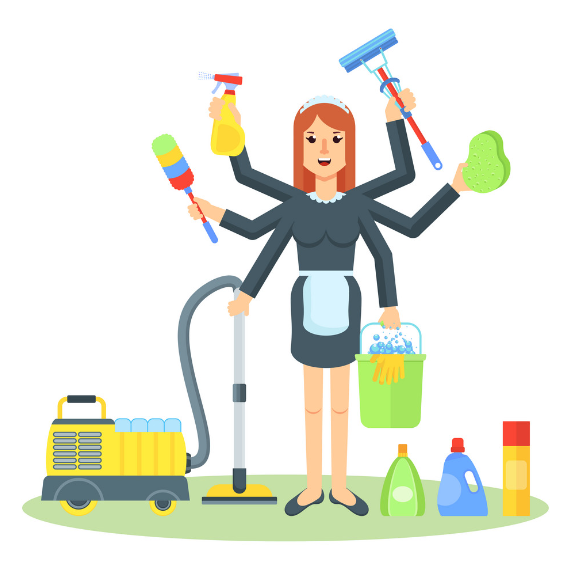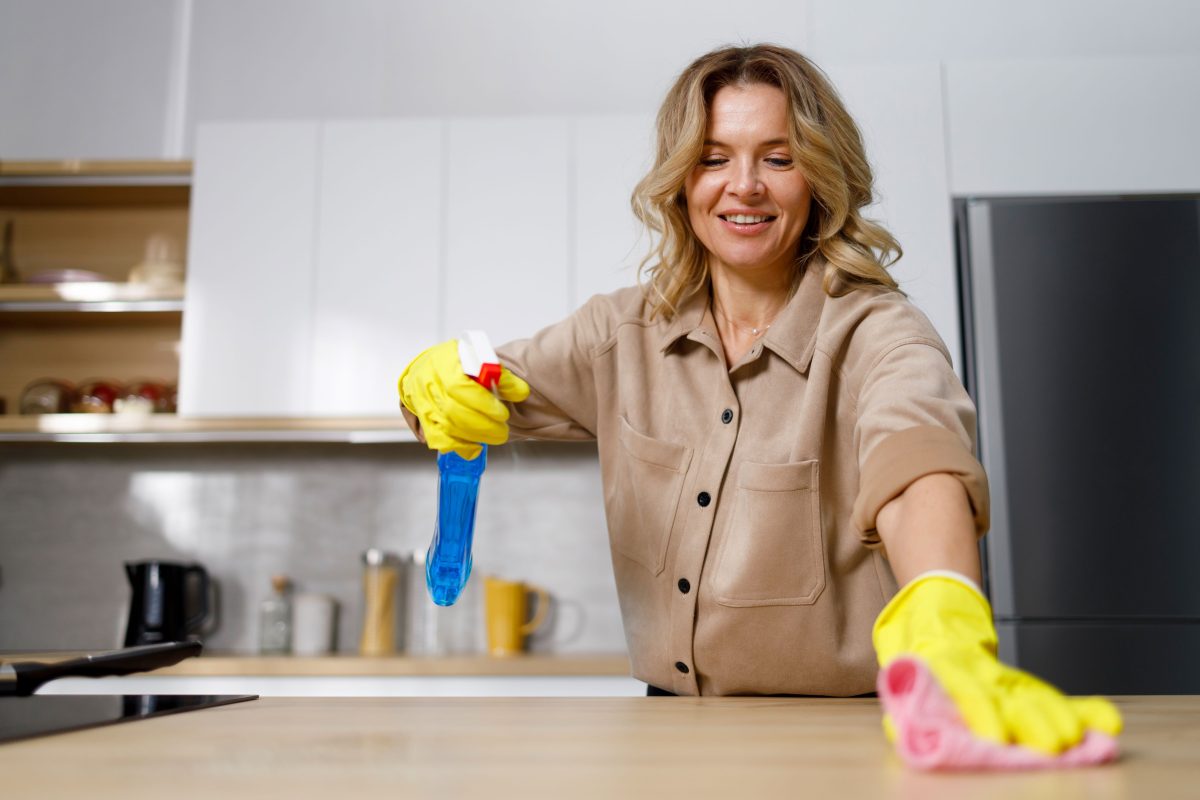The Best Everyday Cleaning Practices: Scrub the Surfaces, Vacuum Carpets, and Keep Clutter away
The Best Everyday Cleaning Practices: Scrub the Surfaces, Vacuum Carpets, and Keep Clutter away
Blog Article
Understanding the Requirement for Thoroughly Sanitizing and Disinfecting Frequently Touched Surfaces in High-Traffic Areas
In the world of public wellness and safety and security, the thorough sanitation and sanitization of often touched surface areas in high-traffic areas stand as critical steps in stopping the spread of dangerous microorganisms. By checking out the different facets of surface sanitation, from the dangers connected with ignoring cleaning protocols to the effective approaches that can be used, a more clear understanding arises of the crucial function these practices play in protecting public health.
Importance of Surface Area Sanitation
Stressing the detailed sanitation of high-traffic surfaces is essential in maintaining a sanitary environment and preventing the spread of hazardous microorganisms. High-touch surfaces such as door manages, light buttons, elevator switches, and countertops function as reproducing premises for microorganisms and viruses. Routine sanitation of these surfaces is crucial to lower the danger of contamination and transmission of health problems.
By implementing a durable sanitation procedure, establishments and companies can create a safer setting for visitors, customers, and employees. Correct surface area sanitation not only minimizes the spread of transmittable diseases yet likewise infuses self-confidence in the sanitation and safety of the facilities. This proactive technique shows a commitment to health and wellness, which is specifically vital in high-traffic locations where the likelihood of exposure to virus is enhanced.
Furthermore, surface sanitation plays a critical role in total infection control approaches. Integrated with hand health methods, wearing masks, and maintaining physical distancing, complete disinfection of high-touch surfaces forms a thorough defense against the transmission of hazardous microorganisms. Prioritizing surface area disinfection is a crucial element of an alternative method to health and safety and security in shared areas.
Risks of Overlooking Cleansing Practices
Disregarding detailed disinfection of high-traffic surface areas significantly increases the danger of viral and bacterial contamination, positioning a significant danger to the health and wellness of people often visiting these areas. Failing to execute proper cleaning practices can bring about the accumulation and spread of unsafe microorganisms, including microorganisms and viruses, on often touched surfaces such as doorknobs, hand rails, lift buttons, and counter tops.

Moreover, overlooking the relevance of complete cleansing not only compromises the health of individuals however additionally undermines initiatives to keep a clean and sanitary environment. It is essential to acknowledge the significance of proper disinfection procedures in avoiding the spread of infections and securing public health and wellness.
Reliable Sanitation Techniques
To maintain optimum tidiness and lower the threat of contamination on high-traffic surface areas, using effective sanitation approaches is essential. One of the most efficient and usual disinfection methods is utilizing chemical anti-bacterials.
One more efficient technique is the use of UV-C light. UV-C light has been revealed to be efficient in killing a wide array of microorganisms by disrupting their DNA structure, thus stopping them from reproducing. It is crucial to use UV-C light correctly, making sure that the right intensity and exposure time are applied to achieve the desired disinfection results.
Furthermore, employing vapor cleaning as a sanitation technique can be very efficient, especially on surface areas that are heat-resistant. Steam can pass through porous surface areas and kill microorganisms, viruses, and various other pathogens properly. When using vapor cleaning, it is vital to make sure that the surface gets to the needed temperature level for an adequate amount of time to guarantee appropriate disinfection.
Effect On Public Health
The upkeep of high standards of sanitation and disinfection on high-traffic surfaces plays a critical function in guarding public health. Often touched surface areas in areas with high step, such as doorknobs, hand rails, lift buttons, and bathroom centers, act as breeding premises for harmful microorganisms. Falling short to sufficiently decontaminate these surface areas can result in the quick spread of infectious illness within neighborhoods. By implementing detailed disinfection protocols, the risk of transmission of viruses, germs, and various other bacteria can be dramatically reduced.
In high-traffic areas like airports, colleges, healthcare facilities, and public transport systems, the effect of extensive disinfection actions can not be downplayed. Focusing on the sanitization of often touched surfaces is an aggressive method to promoting public wellness and improving the safety of people in common More Help spaces.
Applying Normal Cleansing Procedures
Promptly setting up and adhering to a constant schedule of cleaning methods is critical for keeping the cleanliness and security of high-traffic surface areas. Regular cleansing protocols are necessary in avoiding the build-up of bacteria and pathogens on here are the findings often touched surface areas, especially in areas with high foot website traffic. By executing an organized approach to cleaning, companies can efficiently minimize the risk of illness transmission and produce a much healthier environment for workers, clients, and the general public.
To develop an effective cleaning routine, it is critical to identify high-traffic locations that need constant attention. These areas may include doorknobs, hand rails, lift switches, restroom facilities, and shared equipment. Executing a routine cleaning program that targets these surface areas multiple times a day can considerably decrease the spread of dangerous microorganisms and infections.
In addition, making use of ideal cleaner and anti-bacterials is key to ensuring that surfaces are thoroughly sanitized. Normal training of cleaning team on correct cleansing techniques and the importance of adherence to the cleaning timetable is also important in maintaining a hygienic atmosphere. By focusing on constant cleansing procedures, companies can promote the health and wellness and well-being of people who connect with these high-traffic surfaces.

Conclusion
Finally, it is crucial to prioritize thorough sanitation and sanitization of regularly touched surfaces in high-traffic locations to avoid the spread of unsafe virus and keep public health and wellness. Neglecting proper cleansing methods can increase the danger of contamination and transmission of conditions. By applying normal cleaning protocols and making use of efficient sanitation methods, we can create a more secure setting for every person (Everyday cleaning). It is essential to recognize the relevance of maintaining tidy surfaces in high-traffic areas to ensure the wellness of the community.
In the world of public health and wellness and security, the precise sanitation and sanitization of often touched surface areas in high-traffic areas stand as vital actions in avoiding the spread of damaging virus. By checking out the numerous elements of surface area sanitation, from the risks associated with neglecting cleansing protocols to the effective approaches that can be utilized, a visit our website clearer understanding arises of the vital duty these methods play in securing public health and wellness.Additionally, utilizing vapor cleaning as a sanitation approach can be very reliable, especially on surfaces that are heat-resistant. When using vapor cleansing, it is crucial to ensure that the surface area reaches the needed temperature level for an enough amount of time to assure proper sanitation.
In verdict, it is crucial to focus on complete sanitation and sanitization of regularly touched surfaces in high-traffic areas to stop the spread of harmful virus and maintain public health and wellness.
Report this page